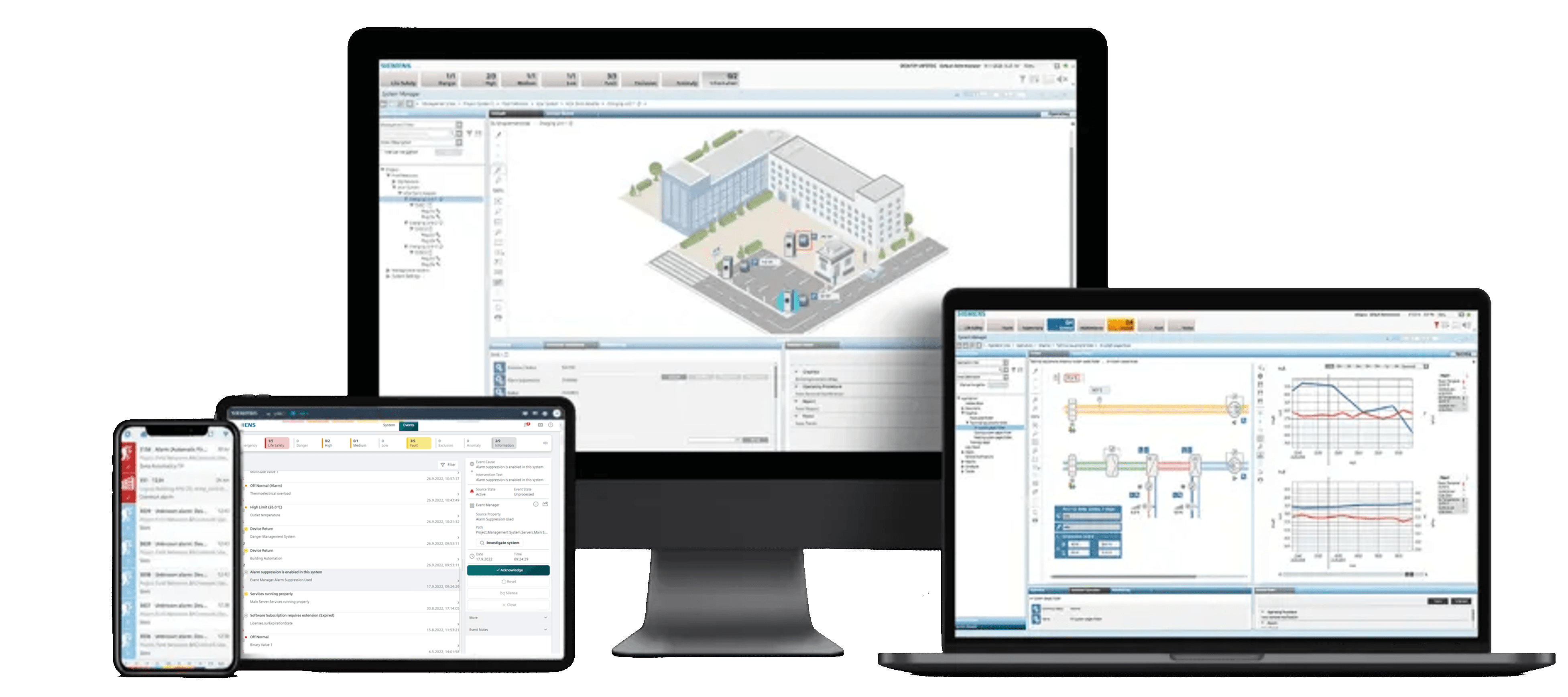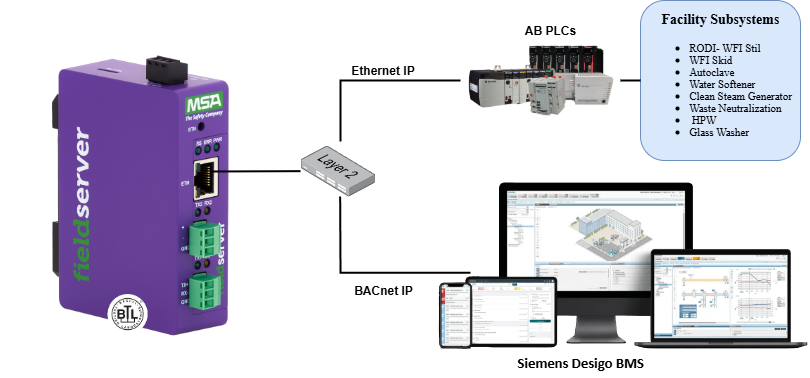Allen-Bradley PLCs to Siemens Desigo BMS Integration
 Case Study – Allen-Bradley PLCs to Siemens Desigo BMS
Integration
Please CONTACT US for questions
Case Study – Allen-Bradley PLCs to Siemens Desigo BMS
Integration
Please CONTACT US for questions
Overview
Siemens required an integration that would connect a diverse set of critical facility systems—RODI, WFI Stil, WFI Skid, Autoclave, Water Softener, Clean Steam Generator, Waste Neutralization, HPW, and Glass Washer—into a single Siemens Desigo Building Management System (BMS). These subsystems were each controlled by Allen-Bradley PLCs, specifically CompactLogix and MicroLogix models (LOGIX5324ER, LOGIX5316ER, LOGIX5332E, LOGIX5318ER, and MICROLOGIX 1400).

The initial integration concept was OPC UA to BACnet/IP, but the scope was revised to Ethernet/IP (client) to BACnet/IP (server). This shift simplified compatibility, reduced integration risk, and aligned with the available expertise for long-term support.
Chipkin’s approach
Chipkin deployed a FieldServer Gateway to bridge the Allen-Bradley PLCs, which were controlling the facility’s subsystems, into the Siemens Desigo environment. The gateway acted as an Ethernet/IP client on the PLC side and a BACnet/IP server for Desigo. This allowed Desigo to natively consume the subsystem data as BACnet objects, making alarms, trends, and controls accessible from one platform.
Because the project involved multiple PLC families—CompactLogix and MicroLogix—each exposing unique sets of data, Chipkin engineers validated parameters such as EIP_CON_TYP, EIP_TAG_NAME, and EIP_Path. The mappings were aligned with customer documentation, then tested against live Desigo graphics to confirm accurate point representation. This ensured that data from each subsystem, whether it was sterilization, water treatment, or steam generation, was visible and usable within Desigo.

Challenges and Solutions
While Chipkin completed most of the integration efficiently, several technical hurdles required targeted fixes to ensure reliable communication between the Allen-Bradley PLCs and the Siemens Desigo BMS. The main challenges included:
- Glass Washer alarm mapping: The OPC documentation referenced AlarmFlag and AlarmFlag1 tags that were absent in the PLC program. Alarms failed to reach Desigo until Chipkin and Siemens corrected the PLC tags and FieldServer mapping, restoring alarm functionality.
- Autoclave TCV-112 mapping: A Desigo graphic displayed incorrect data because TCV-112 was bound to the wrong object. Chipkin updated the mapping list and reconfigured the FieldServer to ensure the graphic reflected live values.
- Unsupported data types: The Water Softener exposed “L-type” 64-bit integers, which the FieldServer firmware did not support. These points were excluded from the integration and the limitation was escalated for potential future support.
Results & Real-World Implications
The integration was driven by Siemens’ goal of centralizing facility operations into the Desigo BMS. Previously, each subsystem—RODI, autoclaves, water softeners, and others—was monitored individually, creating inefficiencies and slowing response times. By connecting all subsystems through the Chipkin FieldServer, Siemens gained a unified view of critical infrastructure within Desigo.
Operators now have a single platform for monitoring and control, which reduces manual checks, minimizes training complexity, and speeds up decision-making. Real-time alarm visibility improves response during critical events, while accurate data mapping supports compliance with safety and regulatory requirements. The consolidation also lowers operating costs by streamlining maintenance and enabling energy optimization.
- Centralized monitoring and control: One Desigo console instead of multiple disconnected systems.
- Faster responses: Real-time alarms and corrected mappings allow quicker action during critical events.
- Improved safety: Verified alarm paths ensure sensitive processes are always supervised.
- Compliance and reporting: Consistent data makes regulatory documentation easier to produce.
- Lower operating costs: Reduced manual checks and optimized energy management increase efficiency.
By bridging Allen-Bradley PLCs to Desigo, Chipkin delivered more than protocol conversion. The project created a maintainable, future-ready framework that improves safety, compliance, and operational efficiency across the facility.
About Us
Chipkin™ is a building and industrial automation protocol expert. We develop, configure, install, and support gateways (protocol converters), data loggers, and remote monitoring and control applications.